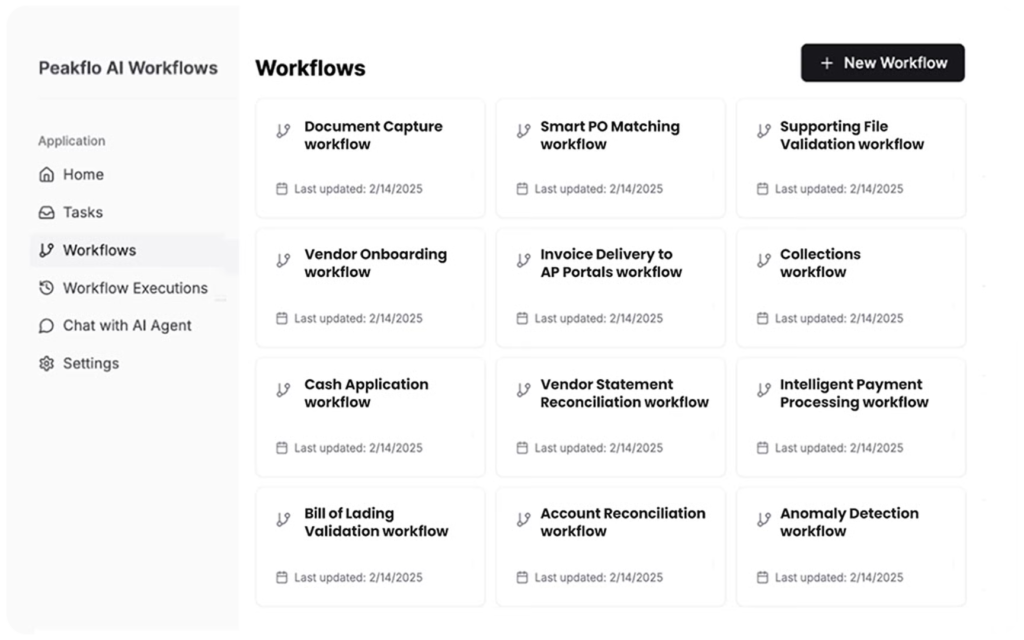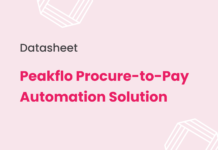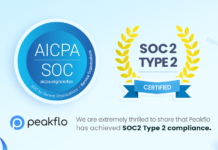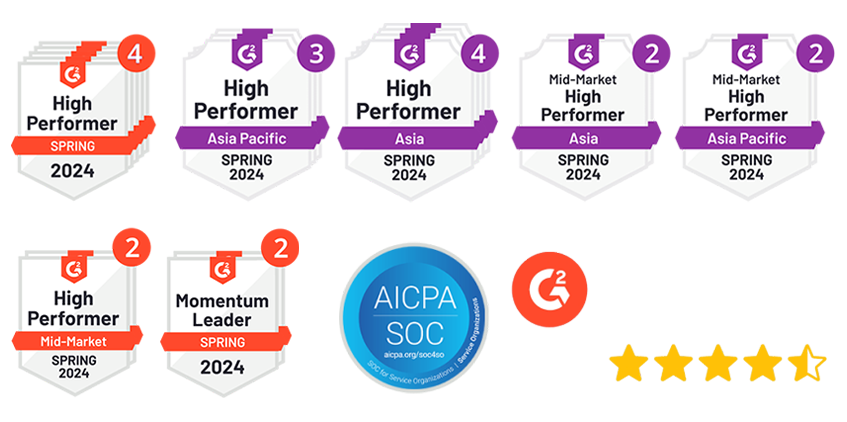Autonomous AI agent technology addresses a critical challenge facing modern businesses: the need for systems that can operate independently while delivering consistent results. The market reflects this demand, valued at $6.8 billion in 2024 and projected to grow at more than 30% annually through 2034. This growth stems from the practical capabilities these systems bring to organizations seeking greater operational efficiency.
Autonomous agents differ fundamentally from traditional AI systems. While conventional AI requires constant human guidance, autonomous agents can perform tasks independently, make decisions, and adapt to their environment without continuous supervision. These advanced systems use AI language models to redefine task execution, creating smarter, more adaptive, and self-sufficient operations. Businesses implementing autonomous AI agents report significant benefits, including faster completion of complex tasks, reduced errors, and lower operational costs through process automation.
Autonomous AI agents have become essential for companies pursuing faster decision-making, reduced costs, and greater agility. Over the next year, more than 60% of organizations plan to create human-agent teams, where these AI agents serve as subordinates or support human capabilities. With their ability to make independent decisions and perform challenging tasks with limited human input, fully autonomous AI agent systems are positioned to change how businesses operate across virtually every industry.
Understanding autonomous AI agents and their practical applications is crucial for maintaining a competitive advantage and ensuring optimal operational efficiency. This guide explores the concept of autonomous agents, examines their types and operational mechanisms, and discusses strategies for implementing them effectively in your organization.
What is an Autonomous AI Agent?
The concept of an autonomous AI agent represents a significant evolution in artificial intelligence systems. These digital entities operate with remarkable independence, setting them apart from conventional AI applications we’ve grown accustomed to using.
Definition and core concept
An autonomous AI agent is a software program designed to interact with its environment, collect data, and use that information to perform self-determined tasks aimed at meeting predetermined goals. While humans establish these goals, the agent independently chooses the optimal actions needed to achieve them.
Autonomous AI agents possess several defining characteristics that distinguish them from other AI systems: autonomy in operation, reactivity to environmental changes, proactivity in pursuing goals, social ability to interact with humans or other agents, and capacity to learn from experience.
These systems can sense their surroundings (whether physical or virtual), make informed decisions based on collected data, and execute actions that support their predetermined objectives. For instance, a contact center AI agent might automatically ask customers questions, search internal documents for relevant information, and provide solutions—all while determining whether it can resolve queries independently or needs to transfer them to human representatives.
How do they differ from traditional AI systems?
What makes autonomous agents fundamentally different from traditional AI systems? The distinction lies across several key dimensions:
- Independence level: Traditional AI requires explicit instructions for every action, while autonomous agents operate with minimal human oversight after receiving initial goals.
- Learning capability: Traditional AI systems typically have limited learning abilities or require manual retraining. Autonomous agents continuously learn from interactions to improve performance.
- Decision-making: Traditional systems rely heavily on explicit human instructions, but autonomous agents make decisions independently.
- Memory utilization: Autonomous agents store previous actions and experiences, enabling them to refine their approach over time.
Autonomous agents can break complex tasks into subtasks and develop their own workflows. They unify various capabilities into single workflows, removing bottlenecks caused by disconnected systems. They also identify dependencies between tasks, enabling structured execution across multi-step processes and making automation more dynamic.
Foundation models vs. autonomous agents
Foundation models—particularly large language models (LLMs)—serve as the technological backbone for many autonomous agents, but they aren’t equivalent to agents themselves. These models alone can’t interact with their environment, make decisions, or execute tasks independently.
The relationship between these technologies matters significantly. When agentic systems are built using foundation models rather than predefined rules, they gain the potential to adapt to different scenarios, much like LLMs can respond intelligently to prompts on which they haven’t been explicitly trained. Foundation models must be augmented with additional technologies and capabilities to create truly autonomous agents.
While foundation models primarily focus on processing and generating information, autonomous agents extend these capabilities by incorporating:
- Planning components that enable strategy formulation
- Action mechanisms for task execution
- Memory systems for storing past interactions
- Tool integration capabilities for using external resources
This integration allows autonomous agents to accomplish what foundation models alone cannot—operating independently after an initial prompt, evaluating assigned goals, breaking tasks into subtasks, and developing their own workflows to achieve specific objectives.
Autonomous AI agents bridge the gap between theoretical AI models and real-world problem-solving, making them valuable assets across numerous applications and industries.
Types of Autonomous AI Agents
Image Source: Bacancy Technology
Autonomous AI agents come in different forms, each designed for specific business challenges and operational requirements. Each type possesses distinct capabilities, decision-making mechanisms, and memory utilization that make them suitable for different applications. Selecting the right agent architecture depends on understanding these fundamental differences and matching them to your specific tasks.
1. Reactive Agents
Reactive autonomous AI agents operate on immediate perception without considering past experiences. These agents follow predefined rules or condition-action mapping to respond directly to current environmental stimuli. They lack internal models or memory systems, making them stateless and unable to learn from past interactions.
Reactive agents offer several practical advantages for businesses. They provide quick responses to environmental changes, making them ideal for tasks requiring fast reactions. Their straightforward architecture makes them easy to design and implement, with minimal computational resource requirements.
Common applications include basic thermostats that adjust temperature based on current readings, simple chess-playing programs that evaluate only the current board state, and basic chatbots with predetermined responses. For businesses needing immediate, rule-based responses without complex decision-making, reactive agents provide cost-effective solutions.
2. Limited Memory Agents
Limited memory agents can access and utilize historical data to inform future decisions. These agents store temporary information just long enough to be useful before updating or discarding it. This capability bridges the gap between purely reactive systems and more sophisticated learning agents.
These agents are commonly used in pattern recognition, decision-making under uncertainty, and predictive analytics. Their ability to retain short-term memory allows them to track specific objects or situations over time, providing a dynamic learning capability that enhances decision-making.
Self-driving cars represent a practical example of limited memory agents, as they analyze data like the speed and trajectory of nearby vehicles and road markings to navigate safely. Similarly, recommendation systems like those used by Netflix or Amazon use limited memory to suggest items based on recent browsing history. For businesses requiring context-aware responses without complex long-term learning, these agents offer an optimal balance of capability and efficiency.
3. Goal-Based Agents
Goal-based agents operate with specific objectives in mind, evaluating different possible actions to determine which ones will help achieve their goals. These agents expand on model-based concepts by considering the impact of their possible actions before performing them.
Goal-based agents can think beyond the present moment and decide the best actions to take to achieve their objectives. They utilize search algorithms to determine the most efficient path toward their goals. This forward-thinking capability makes them valuable for strategic business applications.
These agents find applications in robotics, computer vision, and natural language processing, where reaching clear objectives is crucial. Their ability to handle complex tasks and adapt to changing conditions makes them suitable for a wide range of applications requiring strategic thinking. Businesses benefit from goal-based agents when they need systems that can plan and optimize toward specific outcomes.
4. Utility-Based Agents
Utility-based agents take decision-making further by evaluating different options based on a utility function that measures the desirability of various outcomes. Rather than simply achieving a goal, these agents seek to maximize overall benefit or satisfaction.
An autonomous vehicle might use utility functions to balance safety, speed, fuel efficiency, and passenger comfort when making driving decisions. Similarly, in financial applications, utility-based agents can optimize investment strategies by weighing risk against potential returns.
The decision-making process in utility-based agents follows a clear sequence: perceiving the environment, generating possible actions, predicting outcomes, evaluating utility, selecting the optimal action, and learning from results. This approach allows them to make nuanced decisions in complex scenarios with multiple competing objectives.
5. Learning Agents
Learning agents represent a significant advancement in autonomous AI systems, as they can improve their performance over time by adapting to new experiences and data. Unlike other agent types that rely on predefined rules or models, learning agents continuously update their behavior based on feedback from the environment.
Learning agents consist of four main components: a performance element for making decisions, a learning element that adjusts knowledge based on feedback, a critic that evaluates actions, and a problem generator that suggests exploratory actions.
These agents primarily use three machine learning techniques: supervised learning with labeled datasets, unsupervised learning for pattern discovery, and reinforcement learning for decision-making in uncertain environments. For businesses seeking systems that improve automatically through experience, learning agents provide the most sophisticated capabilities.
6. Hierarchical and Multi-Agent Systems
Hierarchical multi-agent systems (HMAS) organize autonomous AI agents into layered structures where higher-level agents manage broader goals and delegate subtasks to lower-level agents. This tree-like hierarchy allows for efficient task decomposition, with each layer handling different abstraction levels.
Agents communicate both vertically (with superiors or subordinates) and sometimes horizontally (with peers) to ensure alignment across the system. This structure prevents decision-making bottlenecks and allows specialization, with higher layers focusing on optimization while lower layers handle real-time execution.
A warehouse robotics system illustrates this concept: a top-level “orchestrator” agent oversees inventory management, mid-level “zone manager” agents handle sections of the warehouse, and low-level “robot controller” agents operate individual machines. This arrangement enables complex systems to function effectively by breaking down problems into manageable components, making it ideal for large-scale business operations requiring coordinated automation.
How Autonomous Agents Work
Autonomous AI agents operate through a systematic cycle that enables independent decision-making and task execution. This operational framework consists of four key stages that work together to create intelligent, self-directed systems.
1. Sensing and data collection
What are the data sources for autonomous agents?
Autonomous agents begin their operational cycle by gathering information from their environment. This perception phase acts as the foundation for all subsequent actions, serving as the system’s primary information gateway. These agents collect data through multiple channels:
- Sensory inputs: Physical sensors like cameras for vision, microphones for sound, LiDAR for spatial awareness, and temperature sensors that measure environmental parameters.
- Digital interfaces: APIs and connections to external knowledge bases and systems.
- Database access: Information retrieval from structured repositories and knowledge graphs.
The agents process raw environmental signals into structured data ready for analysis. Computer vision applications use convolutional neural networks (CNNs) to analyze images and detect objects or movements, while speech recognition systems employ deep learning models to convert audio waves into processable text.
2. Processing and decision-making
How do agents analyze collected information?
Once data collection is complete, autonomous agents analyze information through algorithms designed to determine appropriate actions. This processing stage employs several mechanisms:
The agent first identifies patterns and contextual relationships using machine learning algorithms. Natural language processing models like transformers help agents understand human language, while specialized algorithms interpret different data types.
The decision-making framework then evaluates potential actions based on the agent’s goals or utility functions. Agents employ different approaches depending on their design:
- Rule-based systems for straightforward decisions
- Probabilistic models for handling uncertainty
- Complex neural networks for nuanced interpretation
The decision process follows a structured sequence: perceiving the environment, generating possible actions, predicting outcomes, evaluating options, selecting the optimal action, and preparing for execution.
3. Action execution and feedback
How do agents implement their decisions?
Autonomous agents implement decisions through execution systems that translate plans into tangible outcomes. These actions range from generating text responses to controlling physical systems or making adjustments to digital environments.
The feedback loop represents a crucial aspect of this phase—a mechanism that allows agents to improve accuracy over time. This process includes:
- Error identification: Recognizing successes or failures in the agent’s output
- Information feedback: Feeding results back into the model as input
- Parameter adjustment: Modifying internal settings to improve future performance
- Cycle repetition: Continuing the process with refined knowledge
This continuous feedback mechanism enables autonomous AI agents to correct mistakes and optimize performance. An image recognition system that mistakenly identifies a lion as a tiger will adjust its model to enhance future identification accuracy.
4. Learning and adaptation over time
What makes autonomous agents improve over time?
Advanced autonomous agents distinguish themselves through their ability to improve via experience. Unlike static systems following predefined rules, learning agents modify their behavior based on outcomes and new data.
Agents receive initial training through various methods: supervised learning with labeled datasets, unsupervised learning for pattern discovery, or reinforcement learning using trial and error with rewards and penalties.
During operation, autonomous agents employ several adaptation strategies:
- Continuous model updates: Adjusting internal algorithms based on new information
- Transfer learning: Applying knowledge from one domain to another
- Meta-learning: Learning how to learn more effectively over time
This learning capability creates a powerful improvement cycle where autonomous AI agents develop greater efficiency, accuracy, and adaptability through each interaction. Healthcare applications demonstrate this capability—AI systems improve diagnostic tools by learning from errors made in initial medical evaluations.
Key Features of Fully Autonomous AI Agents
Image Source: Kanerika
The distinctive power of fully autonomous AI agents lies in five critical capabilities that collectively enable their independent operation. These features represent the cutting edge of AI development and determine an agent’s effectiveness in real-world applications.
Autonomy and goal orientation
Fully autonomous AI agents possess the ability to operate independently with minimal human oversight. Once given objectives, these systems design their own workflows, breaking complex goals into manageable subtasks. This self-directed approach allows them to pursue predefined outcomes rather than simply performing isolated tasks. They can determine the best path forward, adjust strategies in real-time, and evaluate progress toward completion, moving beyond fixed instructions to genuine goal-oriented behavior.
Tool integration and external browsing
Advanced autonomous agents excel through their ability to connect with external tools and data sources. They integrate with different applications via APIs, pulling information from databases, web services, or code interpreters. These agents can navigate websites, understand web content, and perform browser-based actions independently. This capability enables them to extract real-time information from the internet, maintaining relevance by accessing the most current data available. Such integration allows autonomous agents to execute complex tasks spanning multiple systems without requiring constant human guidance.
Memory and contextual awareness
Context-aware memory systems represent a crucial evolution in autonomous agent architecture. Unlike stateless models, processing each query in isolation, effective agents maintain memory across interactions. These memory systems come in several forms: procedural memory guides task approaches, episodic memory stores specific experiences, and semantic memory provides factual knowledge. Organizations implementing optimized memory systems typically spend 30-60% less on LLM API calls and report 40-70% higher user retention rates.
Multimodal perception
Autonomous agents interpret their environment through various input channels, referred to as multimodal perception. They process text, images, audio, and video to develop understanding. This multisensory capability enables agents to gather richer contextual information, allowing for more accurate responses in complex scenarios. Through combining different data types, agents can better understand nuance, tone, and context, creating more natural and effective interactions.
Learning methodologies like reinforcement learning
Reinforcement learning (RL) stands as a cornerstone methodology for autonomous agent development. This approach enables agents to learn optimal strategies through trial and error, receiving rewards for successful actions and penalties for mistakes. Through techniques like temporal difference learning, agents continuously adjust their behavior based on outcomes. This capability allows them to improve in dynamic environments without explicit programming for every scenario. Over time, these learning mechanisms enable fully autonomous AI agents to deliver increasingly refined performance with each interaction.
Real-World Applications Across Industries
Image Source: Market.us
Autonomous AI agents address specific operational challenges across industries, delivering measurable improvements in efficiency and cost management. These practical implementations demonstrate how businesses can achieve tangible results through strategic agent deployment.
1. Customer service and support
Customer service teams face the challenge of handling high inquiry volumes while maintaining response quality. AI customer service agents resolve this by managing inquiries autonomously, reducing workloads for human representatives while scaling support to thousands of customers. These systems operate continuously across multiple channels, including email, chat, and social media.
The Ottawa Hospital implemented AI agents to provide consistent information access, improving patient care and reducing pre-procedure anxiety. Similarly, the city of Amarillo deployed a multilingual assistant named Emma to deliver round-the-clock support to all residents. These implementations show how AI agents can maintain service quality while expanding accessibility.
2. Finance and fraud detection
Financial institutions struggle with identifying fraudulent activities quickly enough to prevent losses. Autonomous agents excel at detecting suspicious patterns and intervening instantly, surpassing static rules or manual reviews. American Express improved fraud detection by 6% using advanced AI models, while Mastercard’s system processes 125 billion transactions yearly in just 50 milliseconds, boosting fraud detection rates by up to 300%.
JPMorgan’s Contract Intelligence platform demonstrates another application, reducing document review time from 360,000 hours to seconds. This shows how AI agents can handle resource-intensive processes that previously required extensive manual effort.
3. Healthcare and diagnostics
Healthcare professionals need to process vast amounts of data quickly to make accurate diagnoses. AI agents analyze data from electronic health records, research repositories, and regulatory libraries to assist in diagnoses and personalize treatment plans. In radiology, these systems detect anomalies in medical imaging with precision, improving diagnostic accuracy by up to 20%.
AI agents also monitor health data from wearable devices, producing real-time alerts when critical parameters reach certain thresholds. This proactive approach helps healthcare providers intervene before conditions worsen.
4. Transportation and logistics
Supply chain managers face complex optimization challenges involving weather patterns, traffic, and potential disruptions. Autonomous agents address these by optimizing routes dynamically. Companies implementing AI-driven supply chain management report 15% lower logistics costs and 35% improved inventory levels.
Beyond cost savings, AI agents contribute to sustainability by monitoring and modifying driving habits to reduce emissions and fuel consumption. This dual benefit of efficiency and environmental responsibility makes them valuable for modern logistics operations.
5. Manufacturing and robotics
Manufacturing operations require constant monitoring to prevent defects and maintain quality standards. AI agents monitor production lines continuously, identifying potential defects and quality issues in real-time. They analyze asset telemetry data, providing summaries that highlight performance trends for proactive maintenance.
6. Agriculture and environmental monitoring
Farmers need to optimize resource usage while maximizing crop yields. Autonomous agents monitor environmental conditions, optimize resource usage, and predict maintenance needs. AI algorithms analyze satellite imagery to map deforestation, while agricultural AI agents analyze soil data to optimize crop yields while minimizing resource usage.
These systems help identify emerging trends, suggest root causes, and enable farmers to make better decisions regarding planting and irrigation. This data-driven approach improves both productivity and resource efficiency in agricultural operations.
Benefits and Challenges of Autonomous AI Agents
Image Source: Phaedra Solutions
Autonomous AI agents create both opportunities and obstacles for organizations. Understanding these trade-offs helps businesses make informed decisions about implementation and resource allocation.
1. Efficiency and Cost Savings
Autonomous AI agents deliver substantial operational savings across multiple business functions. Studies reveal that businesses implementing AI customer support report 30-40% cost reductions in service operations. Organizations using substantial AI automation reduce operating costs by approximately 30% on average, with every dollar invested in AI generating $3.50 in returns. At IBM, AI Digital Assistant AskHR handles 94% of employee queries, resolving around 10.1 million interactions yearly.
These cost reductions stem from several factors: reduced manual processing time, fewer human errors requiring correction, and streamlined workflows that eliminate redundant steps. The financial impact becomes particularly significant for organizations handling high-volume, repetitive tasks.
2. Scalability and 24/7 Operation
Autonomous agents provide uninterrupted service that strengthens operational consistency. These systems operate continuously without breaks, ensuring businesses remain functional outside traditional hours. They adapt to changes in volume and complexity, making them valuable for organizations experiencing growth or seasonal fluctuations. Recent surveys show 76% of executives are already operating proof-of-concepts enabling autonomous workflow automation.
The scalability advantage becomes especially important during peak demand periods when human resources might be stretched thin. Autonomous agents can handle increased workloads without additional hiring or overtime costs.
3. Risk Mitigation and Safety
Autonomous agents enhance compliance and security frameworks through continuous monitoring capabilities. They provide real-time analysis of risk-relevant data, enabling faster detection of potential issues such as anti-money laundering violations. These systems can be continuously updated with the latest regulatory changes, helping organizations maintain compliance as requirements evolve.
This constant vigilance proves particularly valuable in industries with strict regulatory requirements where manual monitoring might miss critical issues or fail to keep pace with changing standards.
4. Limitations in Creativity and Emotional Intelligence
Autonomous agents face challenges with creative and emotional tasks. Research shows that while AI improved the output of less creative writers, it made little difference to already creative ones. These systems lack genuine empathy despite recognizing emotional cues. Most AI models struggle with cultural nuances and contextual understanding that humans navigate intuitively.
These limitations become particularly apparent in customer service scenarios requiring empathy, creative problem-solving situations, or tasks involving cultural sensitivity and human judgment.
5. Ethical and Security Concerns
Autonomous agents introduce security vulnerabilities that organizations must address proactively. The “excessive agency” of these systems may become our generation’s most serious threat vector. Organizations must implement robust safeguards, including role-based access controls and encrypted communications. Without proper governance, AI trained on biased data can perpetuate discrimination, while accountability remains unclear when determining responsibility for AI-driven decisions.
These concerns require ongoing attention as autonomous agents become more sophisticated and gain greater decision-making authority within organizations.
Experience the Power of Autonomous AI Agent with Peakflo
Peakflo’s Agentic Workflow transforms how finance and operations teams work by automating the tasks that bog them down. Powered by a network of autonomous voice, browser, memory, and knowledge agents, Peakflo enables end-to-end workflow execution with minimal human intervention. From processing invoices and reconciling accounts to generating real-time reports and escalating exceptions, these agents act like trained team members—only faster and smarter.

The results speak for themselves:
- 50% boost in operational efficiency
- 40% drop in costs
- 30% improvement in decision accuracy for enterprises across industries
Curious to see how agentic automation can free up your team for strategic work? Book a free demo with our experts today.
Conclusion
Autonomous AI agents address real business challenges through independent operation, environmental adaptation, and complex decision-making with minimal human oversight.
Organizations that strategically implement autonomous agents—balancing automation capabilities with appropriate human oversight—gain advantages in operational efficiency, customer experience, and innovation capability. Success comes from integrating these systems into workflows where they create the greatest value while addressing inherent limitations.
The key lies not in simply deploying AI, but in identifying specific processes where autonomous agents can solve real problems while maintaining quality standards and appropriate controls.
FAQs
Q1. What is an autonomous AI agent?
An autonomous AI agent is a software program designed to interact with its environment, collect data, and perform tasks independently to achieve predetermined goals. These agents can make decisions, adapt to changes, and operate with minimal human supervision after receiving initial objectives.
Q2. What are the key features of fully autonomous AI agents?
Fully autonomous AI agents possess five critical capabilities: autonomy and goal orientation, tool integration and external browsing, memory and contextual awareness, multimodal perception, and advanced learning methodologies like reinforcement learning.
Q3. How do autonomous AI agents differ from traditional AI systems?
Autonomous AI agents operate more independently, have greater learning capabilities, make decisions on their own, and utilize memory of past experiences. They can also break complex tasks into subtasks and develop their own workflows, unlike traditional AI systems that rely heavily on explicit human instructions.
Q4. What are some real-world applications of autonomous AI agents?
Autonomous AI agents are used across various industries, including customer service (handling inquiries 24/7), finance (fraud detection), healthcare (assisting in diagnoses), transportation (optimizing routes), manufacturing (monitoring production lines), and agriculture (environmental monitoring and crop optimization).
Q5. What are the benefits and challenges of implementing autonomous AI agents?
Benefits include increased efficiency, cost savings, scalability, and 24/7 operation. Challenges involve limitations in creativity and emotional intelligence, potential security vulnerabilities, and ethical concerns regarding accountability for AI-driven decisions. Organizations must carefully balance these factors when implementing autonomous AI agents.










![Why AI Sales Calls Are Making Good Sales Reps Even Better [2025 Guide] ai sales calls](https://blog.peakflo.co/wp-content/uploads/2025/09/65168cf6-3001-4733-8cbc-12d5684cf449-218x150.webp)


































